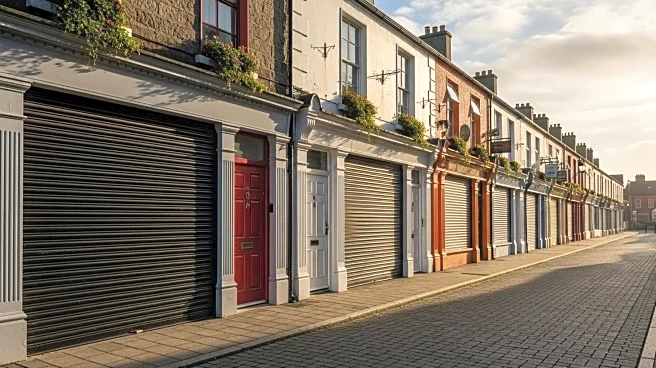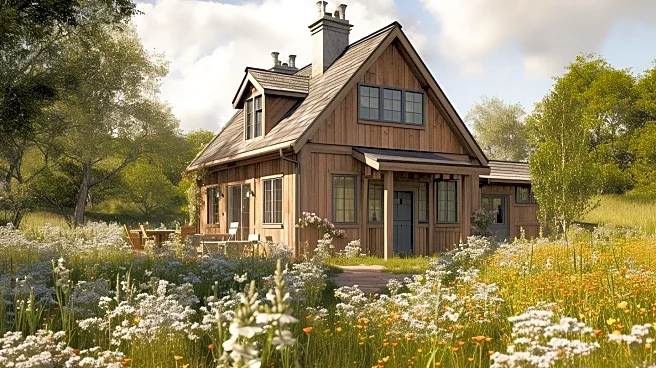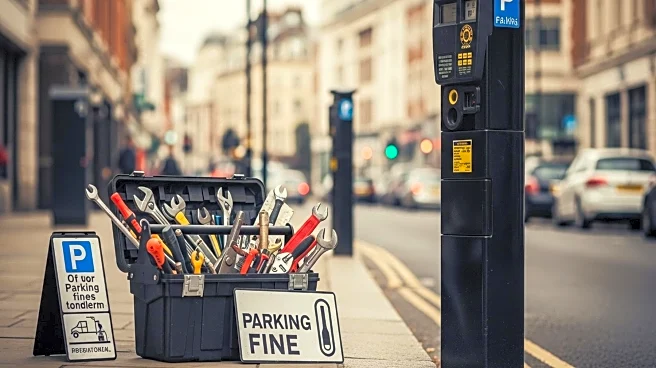What is the story about?
What's Happening?
Northern Ireland's high streets are experiencing significant challenges, with a notable increase in unoccupied commercial properties. According to the Department for Communities, approximately 23% of non-domestic units, including shops, pubs, and offices, are vacant. This trend has been gradually increasing since 2023. Factors contributing to this situation include the growing popularity of online shopping, rising rents, parking charges, higher national insurance payments, and escalating utility bills. In towns like Larne, Lurgan, and Lisnaskea, local businesses are struggling to cope with these pressures. For instance, Larne's Dunluce Street, once a bustling shopping area, now faces significant dereliction, prompting legislative efforts to address property neglect. In Lurgan, traffic congestion caused by increased train services is affecting local businesses, while Lisnaskea grapples with the impact of bank closures, which have reduced foot traffic and logistical convenience for businesses.
Why It's Important?
The challenges faced by Northern Ireland's high streets have broader implications for local economies and communities. The rise in vacant properties can lead to decreased economic activity and reduced community engagement, impacting local businesses and employment. The shift towards online shopping and the closure of physical stores may result in a loss of traditional retail experiences and community hubs. Additionally, the economic pressures on businesses, such as rising rents and utility costs, could lead to further closures and job losses. The situation highlights the need for strategic interventions by local and central governments to revitalize high streets, support local businesses, and adapt to changing consumer behaviors. The proposed Dilapidation Bill and regeneration grants are examples of efforts to address these issues, but their effectiveness will depend on timely implementation and collaboration among stakeholders.
What's Next?
Efforts to address the challenges facing Northern Ireland's high streets are underway, with legislative measures like the Dilapidation Bill aiming to compel property owners to maintain their buildings. If passed, this bill would allow councils to undertake repair works and recoup costs from landowners, potentially reducing dereliction. Additionally, local councils are working on regeneration grants to help landlords bring vacant properties back into use. In Lurgan, the Department for Infrastructure is assessing a business case for a new signalling project to alleviate traffic congestion caused by train services. These initiatives, along with community-driven solutions, could play a crucial role in revitalizing high streets and supporting local economies. However, the success of these efforts will depend on effective collaboration between government bodies, businesses, and community groups.
Beyond the Headlines
The decline of high streets in Northern Ireland reflects broader trends in urban development and consumer behavior. As online shopping continues to grow, traditional retail spaces must adapt to remain relevant. This shift presents opportunities for reimagining high streets as vibrant community spaces that offer unique experiences beyond shopping. The integration of cultural amenities, residential developments, and public services could transform these areas into more livable urban environments. Additionally, the challenges faced by high streets highlight the importance of sustainable urban planning and investment in infrastructure to support local economies. Addressing these issues requires a holistic approach that considers economic, social, and environmental factors.
AI Generated Content
Do you find this article useful?













